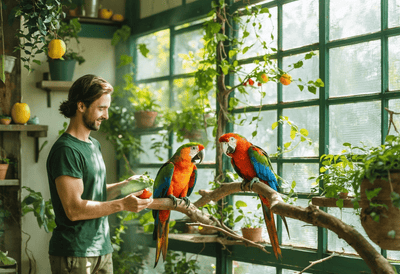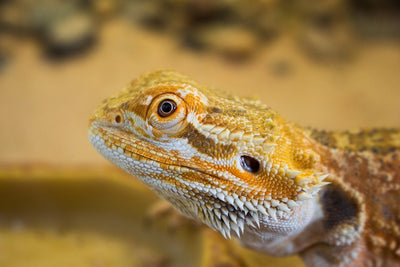
Welcome to the world of ant keeping! Have you ever been fascinated by the intricate workings of an ant colony? With an ant nest kit, you can embark on a mesmerizing journey to create and observe your very own bustling ant colony. This introduction will guide you through the process of setting up your ant nest, caring for your ants, and witnessing their captivating behaviors up close. Discover the captivating world of ants and gain a deeper understanding of their complex social structure. Get ready to delve into a hobby that is not only educational but also incredibly rewarding. Whether you're a seasoned ant enthusiast or a curious beginner, the ant nest kit offers a unique and enriching experience for all. Let's dive into the enthralling world of ant keeping and embark on an exciting adventure with these remarkable little creatures.
Choosing the Right Ant Nest Kit
Choosing the right ant nest kit requires careful consideration of several important factors to ensure the well-being and observation of the ant colony. The size of the ant colony, the specific species of ants, and the desired level of visibility are crucial aspects to think about when selecting the most suitable ant nest kit. The market offers various types of ant nest kits, each tailored to different needs and preferences, catering to both seasoned ant enthusiasts and beginners. These options include ant arenas, ant farms, formicariums, and starter sets, with distinct features and benefits.
Ant Arenas
Ant arenas, characterized by their transparent design, provide a clear view of the ants' activities and are particularly well-suited for small colonies. This design allows observers to witness the intricate behaviors and movements of the ants with ease, making it a popular choice for those interested in close observation.
Ant Farms
On the other hand, ant farms are crafted to mimic a more natural environment, offering a visually appealing setup that is especially conducive to observing larger ant colonies. Their design often includes naturalistic elements such as sand, soil, or vegetation, creating an environment that closely resembles the ants' natural habitat.
Formicariums
Formicariums stand out for their customizable nature, providing the flexibility to add modules and nest inserts as the ant colony expands. This adaptability makes formicariums a versatile choice, allowing enthusiasts to create an environment that can evolve alongside the ants' needs.
Starter Sets
For individuals venturing into ant keeping for the first time, starter sets offer a comprehensive solution, bundling essential components needed to initiate an ant colony. These sets typically include all the necessary elements, such as nesting materials, food sources, and maintenance tools, simplifying the process for beginners and ensuring a convenient start to ant keeping.
Understanding the unique characteristics and advantages of each type of ant nest kit is essential for making an informed decision that aligns with the specific requirements of the ant keeper and the well-being of the ant colony. Factors such as the growth potential of the ant colony, the behavior of the ant species, and the level of interaction desired are important considerations when selecting an ant nest kit.
Ants are highly social creatures, and their living environment significantly impacts their well-being and activity. Observing the behavior and activities of ants can be a fascinating and educational experience, and choosing the right ant nest kit plays a pivotal role in facilitating this observation. Additionally, it is crucial to consider the long-term sustainability of the chosen kit, as some ant species can develop extensive colonies over time. Ant keepers should anticipate the future expansion of the colony and select a nest kit that can accommodate this growth.
Furthermore, understanding the specific needs of the ant species being kept is essential. Some ant species thrive in environments with high visibility, while others prefer secluded nesting areas. Consideration of these factors will ensure that the chosen ant nest kit aligns with the natural instincts and preferences of the ant colony, promoting their overall well-being and activity.
The selection of an ant nest kit is a significant decision that directly impacts the observation and well-being of an ant colony. By carefully evaluating the size of the ant colony, the behavior and growth potential of the ant species, and the desired level of visibility and interaction, ant keepers can make an informed choice that provides a suitable and sustainable living environment for their ant colonies.
Setting Up Your Ant Nest Kit
Preparing the Habitat
When setting up your ant nest kit, it's crucial to ensure that the habitat is well-prepared to meet the needs of your new ant colony. Ants thrive in environments that mimic their natural habitats, so creating a suitable space for them is essential for their well-being and productivity. To do this, you can start by carefully arranging the nest materials, such as soil, sand, or other substrates, to provide the ants with a comfortable and realistic nesting area. Additionally, it's important to provide suitable food and water sources, as well as adequate ventilation, to ensure the ants' comfort and health.
Introducing the Ants to Their New Home
Introducing the ants to their new home is a fascinating and crucial step in the process of setting up your ant nest kit. Observing their initial reactions and behaviors can be both educational and captivating. It's important to handle the ants gently and with care during this stage, as they acclimate to their new surroundings. Proper handling helps reduce stress on the ants, allowing them to adapt more easily to their new habitat. Additionally, closely monitoring their activities and interactions within the nest can provide valuable insights into their social structure and behaviors, offering a unique opportunity to study these fascinating creatures up close.
Creating a Suitable Habitat for Your Ant Colony
Taking the time to properly set up your ant nest kit and introduce the ants to their new habitat is essential for creating a thriving ant colony. By providing a suitable habitat and closely observing the ants' behavior, you can ensure a successful and fulfilling experience as you learn from and interact with these remarkable creatures.
Observing and Maintaining Your Ant Colony
As a dedicated ant enthusiast, observing and maintaining your ant colony is not only a rewarding experience but also crucial for the well-being of your tiny companions. By closely monitoring their activities and taking proactive measures, you can ensure the longevity and vitality of your ant colony.
Monitoring the Ants' Activities
Understanding the Daily Routine
Ants are highly organized creatures with a well-defined daily routine. By observing their behavior at different times of the day, you can gain valuable insights into their foraging, grooming, and resting patterns. This understanding can help you identify any irregularities or potential issues within the colony.
Identifying Foraging Patterns
Foraging is a fundamental activity for ant colonies as they search for food to sustain themselves. By observing their foraging patterns, you can determine the types of food they prefer and ensure a consistent supply of suitable nutrition. Additionally, detecting any changes in foraging behavior can indicate shifts in the colony's needs or health.
Noting Nesting Behaviors
The nest serves as the heart of the ant colony, providing shelter, protection, and a nurturing environment for the ants and their brood. By observing nesting behaviors such as construction activity, maintenance efforts, and the movement of brood, you can gauge the overall well-being of the colony and address any potential issues that may arise.
Tips for Ensuring a Healthy Ant Colony
Providing a Balanced Diet
A diverse and balanced diet is essential for the health and productivity of an ant colony. Offering a variety of food sources, including sugars, proteins, and fats, can support the nutritional needs of different ant castes and developmental stages. Regularly assessing their dietary preferences and adjusting the offerings can help maintain their well-being.
Maintaining Optimal Nest Conditions
Creating and maintaining a suitable nest environment is vital for the comfort and health of the ant colony. Factors such as humidity, temperature, and nesting materials play a critical role in ensuring optimal conditions for the ants. Regularly inspecting and maintaining the nest can prevent potential stressors and promote a thriving colony.
Preventing and Addressing Infestations
Ant colonies are susceptible to infestations by pests, pathogens, or parasites, which can pose significant threats to their stability. Implementing preventive measures such as maintaining cleanliness, controlling environmental conditions, and promptly addressing any signs of infestation can safeguard the colony's well-being and minimize potential risks.
By actively observing and maintaining your ant colony, you not only deepen your understanding of these remarkable insects but also contribute to their welfare and resilience in the captive environment.
Creating your own ant colony with an ant nest kit can be a fascinating and educational experience. Observing the intricate workings of an ant colony can provide valuable insights into the natural world and the behavior of these remarkable creatures. By setting up a controlled environment, individuals can gain a deeper understanding of ant behavior, social structure, and the importance of teamwork within a colony. Furthermore, the hands-on nature of creating and maintaining an ant nest kit can be an enriching and engaging activity for both children and adults alike. Overall, the ant nest kit offers a unique opportunity to learn, explore, and appreciate the complexities of the natural world.






